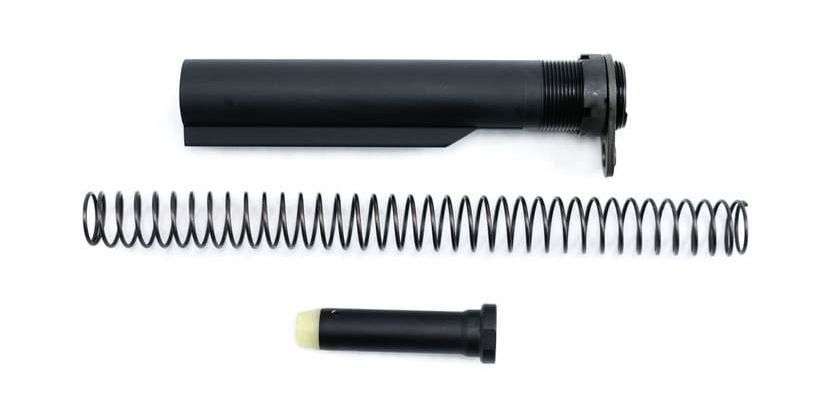
The right buffers and buffer springs are necessary to keep your AR-15 functioning properly. The buffer itself serves as an additional weight to aid in the cyclic action of the AR-15, and it also serves as a cushion between the buffer spring and the bolt carrier group.
Buffers Briefly Explained
As soon as the round is fired, gas from the bullet pushes the BCG rearwards. As the BCG travels back, the tail end of the BCG will make contact with the front of the buffer, or the large flat portion you see on every buffer.
When the BCG hits the buffer, pushing it back, it compresses the buffer spring. Once the buffer spring is compressed and the buffer travels back far enough, the spring expands pushing the buffer and bolt carrier group forward.
As the buffer moves forward it advances the BCG ahead into the receiver, stripping another round from the magazine, and stopping at the end of the buffer tube.
What to Consider When Purchasing
You may be in the market for a buffer kit as a means of improving your rifle’s functionality, or simply because these parts tend to need to be replaced over time. Adjusting the types of springs and buffers you use is also one way to optimize gas delivery and reliability. Here are some things to consider when choosing a buffer kit:
Buffer weight
Using the proper buffer weight will keep your rifle operating smoothly and will extend the overall life of the parts. You can also minimize the recoil impulse by adjusting buffer weight.
What buffer weight should you use for your AR-15? The answer to this question depends on many factors,
Take a look at the variations in weight below. The weights provided are estimates, since the exact ounce count varies from manufacturer to manufacturer:
Carbine:
3 oz. (the most common weight) Usually uses three steel weights.

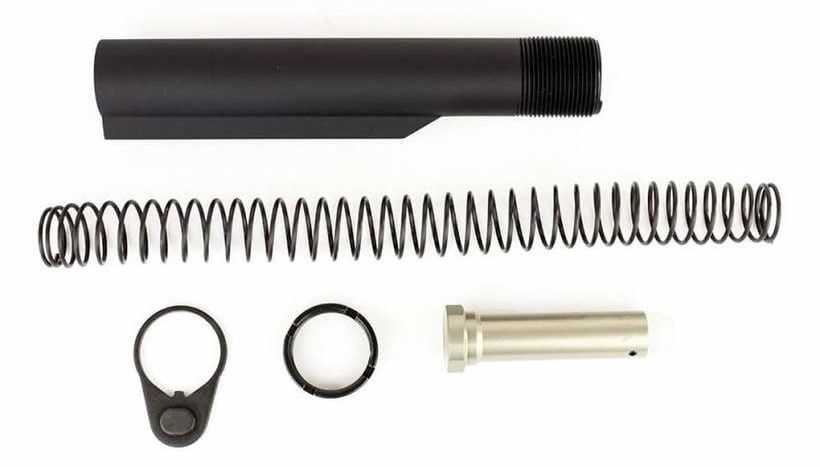
Heavy or H1:
Consists of one tungsten and two steel weights. Weighs around 3.8 oz.
H2:
Typically composed of two tungsten and one steel weight and weighs about 4.6 oz.
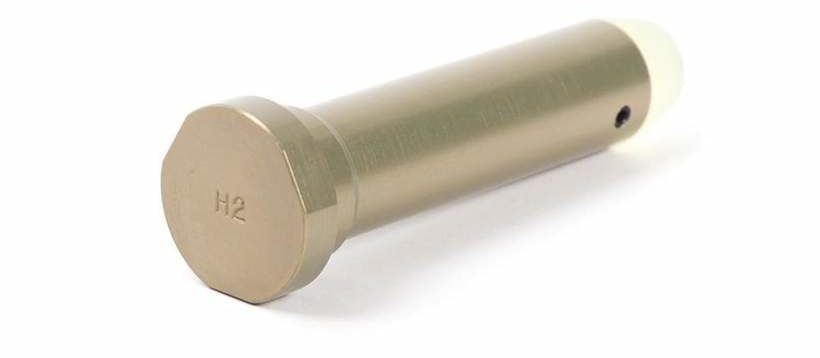
H3:
Normally uses three tungsten weights to weigh around 5.6 oz.
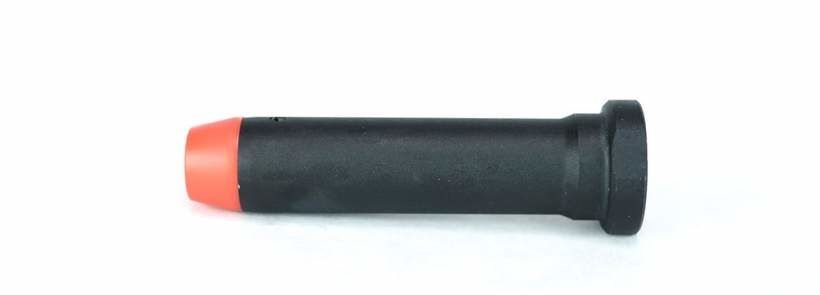
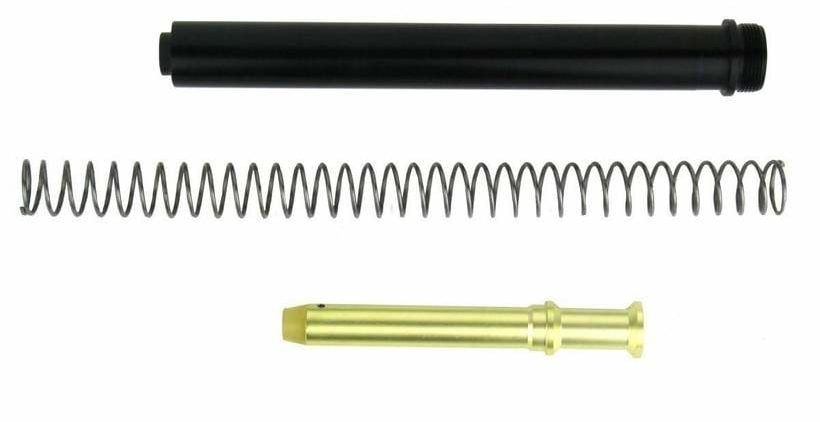
Rifle buffer:
Weighs around 5.0 oz and uses five steel weights and a steel spacer.
Configurable:
You can use different combinations of the included parts to tune your buffer weight to your needs.
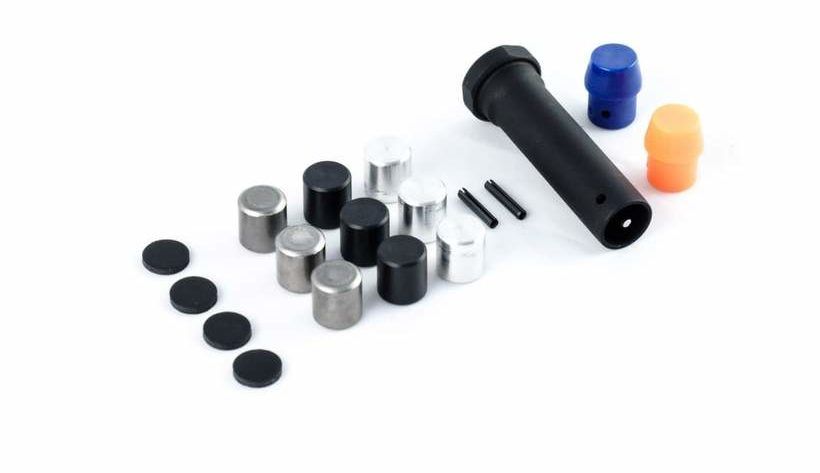
Buffer Length
The two main sizes of buffers are rifle length and carbine length. It’s important to note that the two are absolutely NOT interchangeable. In general, rifle length buffers are used for standard A2 buffer tubes installed for fixed stock ARs. They are made longer than carbine length buffers so that they can successfully fill the extra space in an A2 rifle buffer tube.
Carbine length buffers, on the other hand, are the ideal choice for most collapsible stocks with carbine buffer tubes. A great deal of stocks available on today’s market use Mil-Spec carbine buffer tubes, however some utilize the commercial spec carbine buffer tubes.
Buffer Springs
Buffer springs may look similar, but they do have differences that can affect your rifle’s functionality. While most rifle and carbine springs have exactly the same diameter, they come in different lengths. A standard carbine spring will measure about 10.5” and have 37 to 39 coils, but a standard rifle spring has a typical length of 12.75 and boasts 41 to 42 coils.
Sometimes, a “twang” sound can occur when firing, due to the fact that most buffer springs rub against the internal surface of the buffer tube. You can reduce this noise by choosing a spring with a smoother surface or a special finish to increase lubricity.
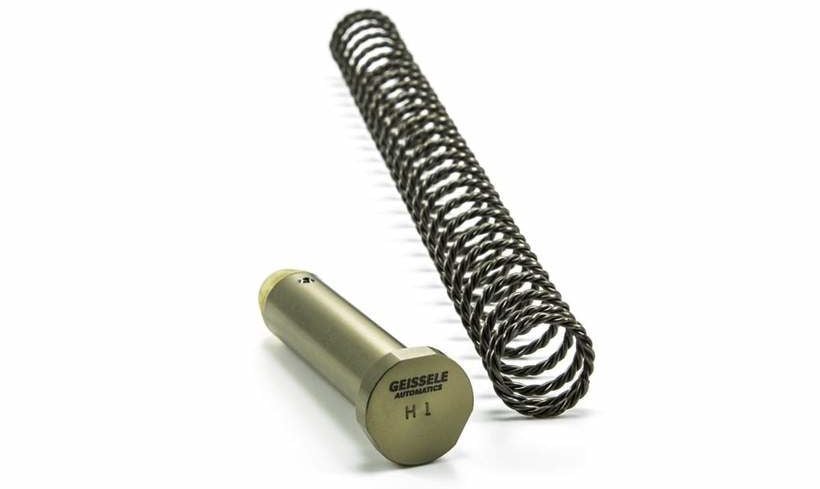
The Geissele Super 42 Braided Wire Buffer Spring is one of our favorite picks for that very reason. Its unique spring design uses three independent strands of wire, just like the German MG42 Machine Gun.
This concept acts as a harmonic damper and energy absorber by allowing the springs to flex separately from each other, decreasing the chance of spring failure. In addition, this design prevents the spring from losing length and force over a given round count and removes annoying spring reverberations (twang).
Recent Buffer System Innovations
Speaking of eliminating twang or smoothing out recoil a bit further, some more modern but less proven buffer systems have emerged on the market, which are worth researching further. For example, the JP Enterprises Gen 2 Silent Captured Spring replaces the traditional buffer and spring with a self-contained unit, eliminating spring noise and reducing friction, and is compatible with carbine and rifle-length buffer tubes for 5.56/.223 AR-15s.
Similarly, the KynSHOT Precision Carbine Recoil Damper uses a hydraulic mechanism to absorb bolt carrier impact, reducing recoil by approximately 20-30%, and fits standard carbine buffer tubes. Finally, the JE Machine Tech AR-15 .223 Silent Recoil Spring System employs a modified spring design to minimize operational noise in standard carbine buffer tubes, maintaining compatibility with existing 5.56/.223 setups.
Conclusion
All in all, the choice of buffer springs and what buffer weight you want to use is up to you and should be dictated by your needs. Whether you are constructing a competition carbine platform, creating a long range AR rifle, producing a firearm specifically for suppressed use, or building a firearm in pistol configuration for CQB applications, the buffer weights and springs are available to make each one run like a champ during your next visit to the range.
2 - 2Shares
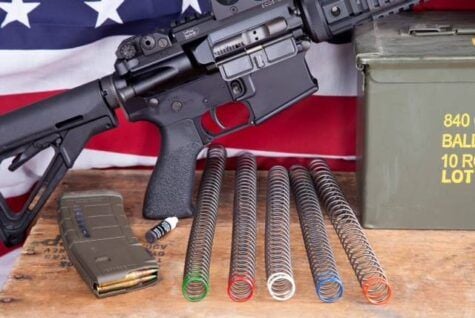


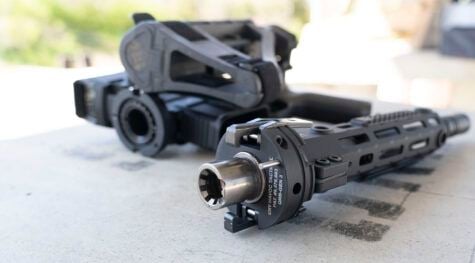
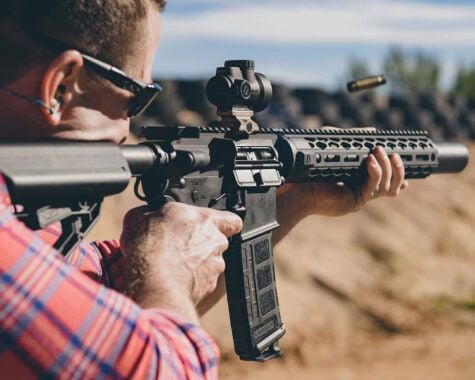
I have and AR in which the recoil seems excessive. I’ve fired other AR’s with very mild recoil, I’m trying to learn how to adjust/reduce the felt recoil. I suspect its a combination of springs and buffers, I just don’t know which combination.
Just reviewing Buffer Tube lengths and Buffer Weights. Good information on this site. You offer competitive pricing on your kits as well. Glad I found this site.
My 12.5” barrel arm was dumping spent cases around 3:00, I changed the BCG to a Sharpes Rifle xtreme with the DLC FINISH and Iam throwing spent cases at 12:00!
I installed a Red Sprinco and an H2 buffer and now Iam at 1:30-2:00. no FAILURES OF ANY KIND, but Iam not at 3:00 any longer
You’re overgassed. Needs a h3.
I found that the 350 legend with 180 grain bullet cycled much better with the A2 mill spec buffer and stock. Mostly because of the 5.4 oz. buffer.
I have an AR9 build that fails to lock the slide open with an empty mag. I am wondering if the KAK configurable buffer kit would be a good start in my attempt to cure this problem. Maybe that kit along with a stiffer spring? Any help appreciated.
The AR build chamber in 9mm is not cycling correctly. Not sure if I have the right buffer and spring.
Building a 350 Legend and trying to do homework on the proper spring and buffer tube weights for both a carbine and rifle. 18” stainless barrel. There must be a table with these values for each caliber and configuration? Why can’t I find it? No need for purchasing the wrong parts! Any help would be appreciated.
The mil spec receiver extension (buffer tube) requires it to be forged and not extruded aluminum..Any semi auto in 5.56 should run with the carbine weight buffer.The H buffer was used to prevent bolt bounce on full auto with the M-4 and the H2 buffer to prevent bolt bounce on full auto with the M-4A1 which uses a heavier barrel..
Great article. Very helpful. Thanks bro. Love the website.